 Shortly after SpaceX's massive Starship launched from Texas on its first full test early Thursday, the 400-foot stack of hardware began to tumble until it broke apart in a fiery explosion over the Gulf of Mexico. The overall demonstration mission – a test of the new rocket's ability to ignite and clear the pad's 500-foot tower – was successful. At liftoff, however, several of the rocket's 33 Raptor engines failed to fire up as planned. Then came the more than a minute-long tumble at roughly three minutes into flight, which kicked off just after the rocket's Starship upper stage and Super Heavy booster failed to separate.
Shortly after SpaceX's massive Starship launched from Texas on its first full test early Thursday, the 400-foot stack of hardware began to tumble until it broke apart in a fiery explosion over the Gulf of Mexico. The overall demonstration mission – a test of the new rocket's ability to ignite and clear the pad's 500-foot tower – was successful. At liftoff, however, several of the rocket's 33 Raptor engines failed to fire up as planned. Then came the more than a minute-long tumble at roughly three minutes into flight, which kicked off just after the rocket's Starship upper stage and Super Heavy booster failed to separate.
 With its third company acquisition in just over two years, marine pump specialist, Svanehøj, continues to expand its service solution business, this time by taking over California-based Complete Cryogenic Services (CCS), a specialist in service and overhaul of submerged pumps on LNG tankers. The number of LNG tankers globally has grown by around 40% in the last five years, and 2022 was a record year with more than 200 new contracts signed. With this, an attractive service and aftersales market emerges, in which Svanehøj is determined to gain market share.
With its third company acquisition in just over two years, marine pump specialist, Svanehøj, continues to expand its service solution business, this time by taking over California-based Complete Cryogenic Services (CCS), a specialist in service and overhaul of submerged pumps on LNG tankers. The number of LNG tankers globally has grown by around 40% in the last five years, and 2022 was a record year with more than 200 new contracts signed. With this, an attractive service and aftersales market emerges, in which Svanehøj is determined to gain market share.
Read More
 In 2020, the world was introduced to Dhawan-I, a 3D printed cryogenic engine made by Skyroot Aerospace. Three years later, the Indian company has been working on a more powerful model, unveiling to the public the new and improved Dhawan-II, which is said to have successfully completed testing. Like its predecessor, this engine is also 3D printed. Skyroot’s cryogenic rocket engine uses two rocket propellants: liquid natural gas (LNG) and liquid oxygen (LoX), which require temperatures below -150 °C for storage and operation. The tests were conducted at Solar Industries’ propulsion test facility in Nagpur, India.
In 2020, the world was introduced to Dhawan-I, a 3D printed cryogenic engine made by Skyroot Aerospace. Three years later, the Indian company has been working on a more powerful model, unveiling to the public the new and improved Dhawan-II, which is said to have successfully completed testing. Like its predecessor, this engine is also 3D printed. Skyroot’s cryogenic rocket engine uses two rocket propellants: liquid natural gas (LNG) and liquid oxygen (LoX), which require temperatures below -150 °C for storage and operation. The tests were conducted at Solar Industries’ propulsion test facility in Nagpur, India.
Read More
A Game Changer for CERN
 CERN’s new visitor and education center, Science Gateway, due to open this autumn, will welcome up to half a million people each year. Project leader Patrick Geeraert describes how this iconic project came about, how it will operate, and what it aims to achieve.
CERN’s new visitor and education center, Science Gateway, due to open this autumn, will welcome up to half a million people each year. Project leader Patrick Geeraert describes how this iconic project came about, how it will operate, and what it aims to achieve.
Read More
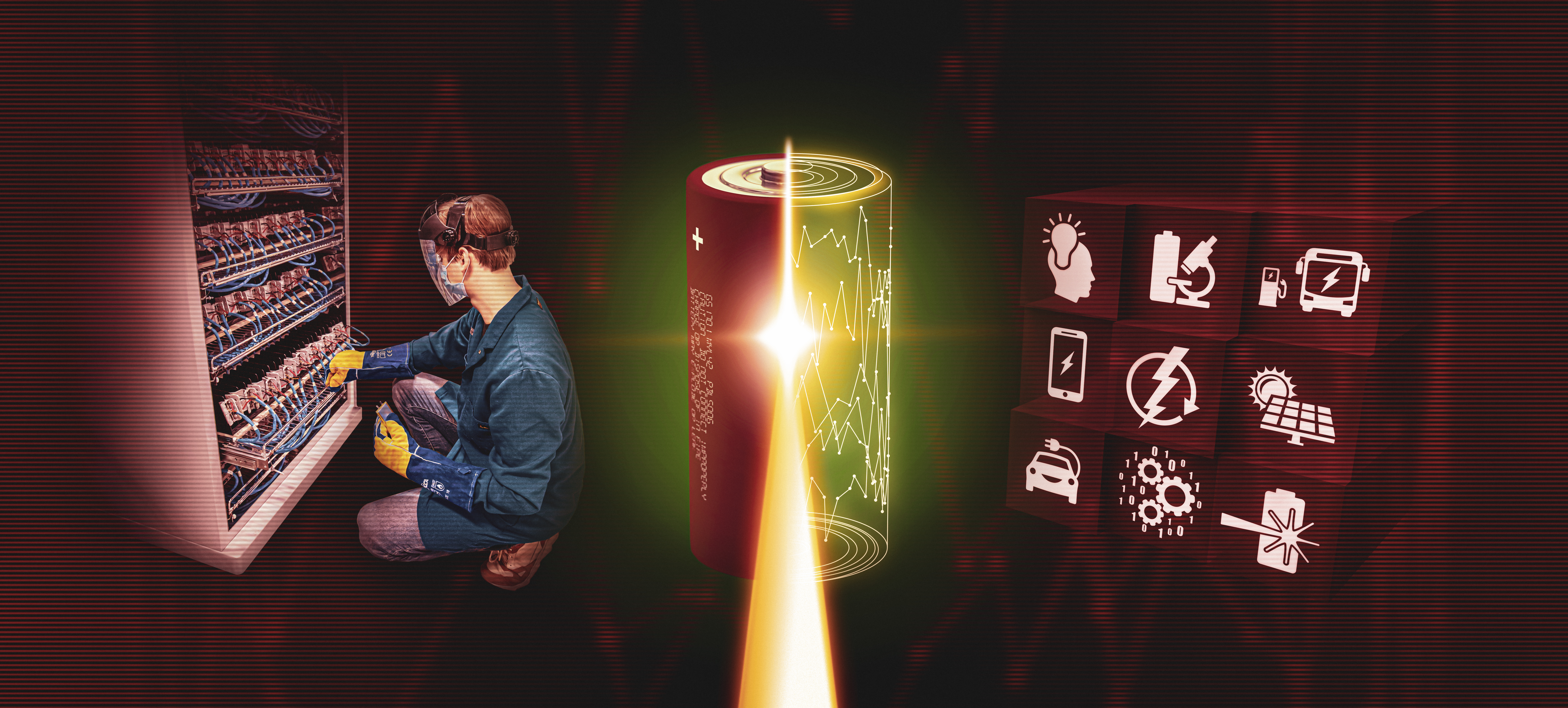 The Department of Energy’s SLAC National Accelerator Laboratory and Stanford University announced the launch of a new joint battery center at SLAC. It will bring together the resources and expertise of the national lab, the university and Silicon Valley to accelerate the deployment of batteries and other energy storage solutions as part of the energy transition that’s essential for addressing climate change.
The Department of Energy’s SLAC National Accelerator Laboratory and Stanford University announced the launch of a new joint battery center at SLAC. It will bring together the resources and expertise of the national lab, the university and Silicon Valley to accelerate the deployment of batteries and other energy storage solutions as part of the energy transition that’s essential for addressing climate change.
Read More
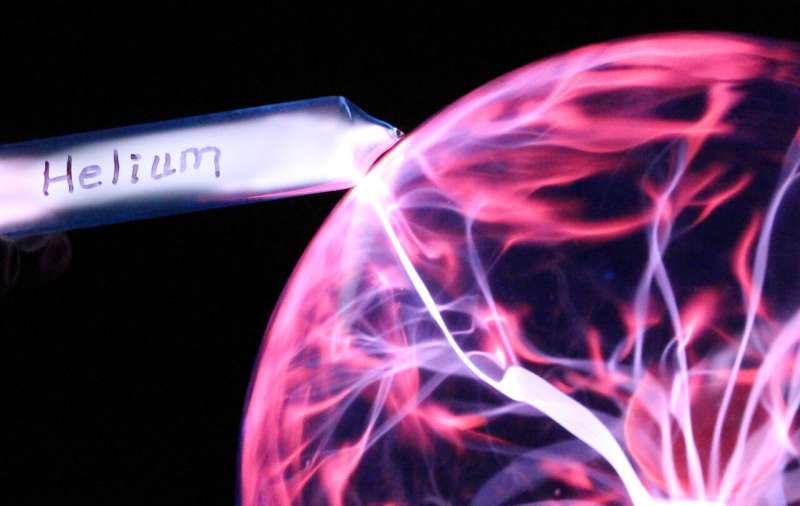 Research led by the University of Oxford could help overturn the current supply crisis of helium, a vital societal resource. The study proposes a new model to account for the existence of previously unexplained helium-rich reservoirs. The findings, published in Nature, could help locate untapped reservoirs of accessible helium. Dr. Anran Cheng (Department of Earth Sciences, University of Oxford), lead author of the study, says, "Our model shows the importance of factoring in the high diffusivity of helium and the long timescales needed to accumulate significant gas quantities, and the fact that the entire geological system acts dynamically to affect the process. This model provides a new perspective to help identify the environments that slow helium gases down enough to accumulate in commercial amounts."
Research led by the University of Oxford could help overturn the current supply crisis of helium, a vital societal resource. The study proposes a new model to account for the existence of previously unexplained helium-rich reservoirs. The findings, published in Nature, could help locate untapped reservoirs of accessible helium. Dr. Anran Cheng (Department of Earth Sciences, University of Oxford), lead author of the study, says, "Our model shows the importance of factoring in the high diffusivity of helium and the long timescales needed to accumulate significant gas quantities, and the fact that the entire geological system acts dynamically to affect the process. This model provides a new perspective to help identify the environments that slow helium gases down enough to accumulate in commercial amounts."
Read More
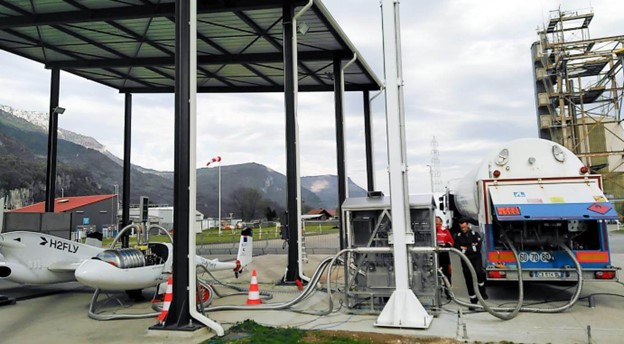 German-based H2FLY has announced success from a liquid hydrogen filling test of its HY4 hydrogen-electric aircraft. The on-ground test at Air Liquide’s Campus Technologies Grenoble in France saw liquid hydrogen fill the aircraft’s new liquid hydrogen storage system, designed and supplied by Air Liquide. Coming as a precursor to future tests in which the storage system will be coupled with H2FLY’s fuel cell system to form a complete hydrogen-electric powertrain, the test comes as a milestone in the steps to achieving hydrogen-powered flight for the Stuttgart company.
German-based H2FLY has announced success from a liquid hydrogen filling test of its HY4 hydrogen-electric aircraft. The on-ground test at Air Liquide’s Campus Technologies Grenoble in France saw liquid hydrogen fill the aircraft’s new liquid hydrogen storage system, designed and supplied by Air Liquide. Coming as a precursor to future tests in which the storage system will be coupled with H2FLY’s fuel cell system to form a complete hydrogen-electric powertrain, the test comes as a milestone in the steps to achieving hydrogen-powered flight for the Stuttgart company.
Read More
Delft Circuits Chosen by NASA JPL Scientist to Support BICEP Project in Antarctica
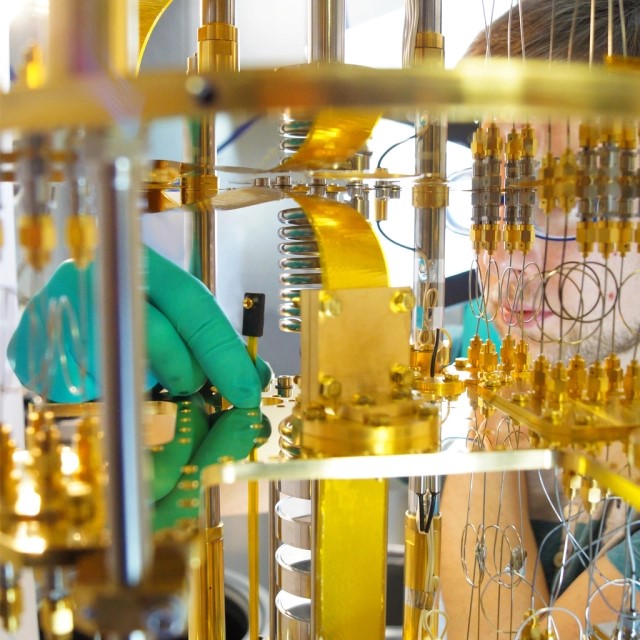 Delft Circuits announced its inclusion in the Background Imaging of Cosmic Extragalactic Polarization (BICEP) project in Antarctica, supporting NASA’s Jet Propulsion Laboratory at CalTech and other project partners. BICEP has been ongoing for several years and is now seeking solutions for a hardware upgrade to its telescope’s sensitivity as the project digs ever deeper into the cosmos to learn more about the origins of the universe. Consequently, a team at JPL is pioneering a new way to scale the number of detectors on the high optical frequency receivers of the telescope array.
Delft Circuits announced its inclusion in the Background Imaging of Cosmic Extragalactic Polarization (BICEP) project in Antarctica, supporting NASA’s Jet Propulsion Laboratory at CalTech and other project partners. BICEP has been ongoing for several years and is now seeking solutions for a hardware upgrade to its telescope’s sensitivity as the project digs ever deeper into the cosmos to learn more about the origins of the universe. Consequently, a team at JPL is pioneering a new way to scale the number of detectors on the high optical frequency receivers of the telescope array.
Read More
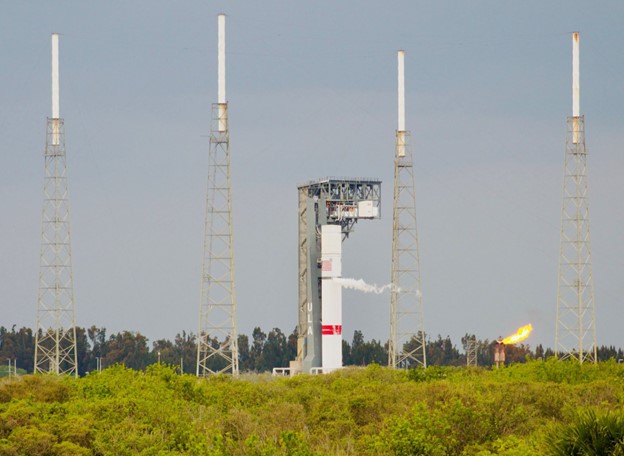 Completing the next phase of testing in preparation for the inaugural Vulcan rocket flight, the United Launch Alliance (ULA) team accomplished tanking demonstrations at Cape Canaveral Space Force Station, Florida. The pathfinder tests filled the Vulcan first stage and Centaur V upper stage with cryogenic propellant on separate days to validate performance of the stages, Vulcan Launch Platform (VLP), Space Launch Complex-41 facilities and ground support systems.
Completing the next phase of testing in preparation for the inaugural Vulcan rocket flight, the United Launch Alliance (ULA) team accomplished tanking demonstrations at Cape Canaveral Space Force Station, Florida. The pathfinder tests filled the Vulcan first stage and Centaur V upper stage with cryogenic propellant on separate days to validate performance of the stages, Vulcan Launch Platform (VLP), Space Launch Complex-41 facilities and ground support systems.
Read More
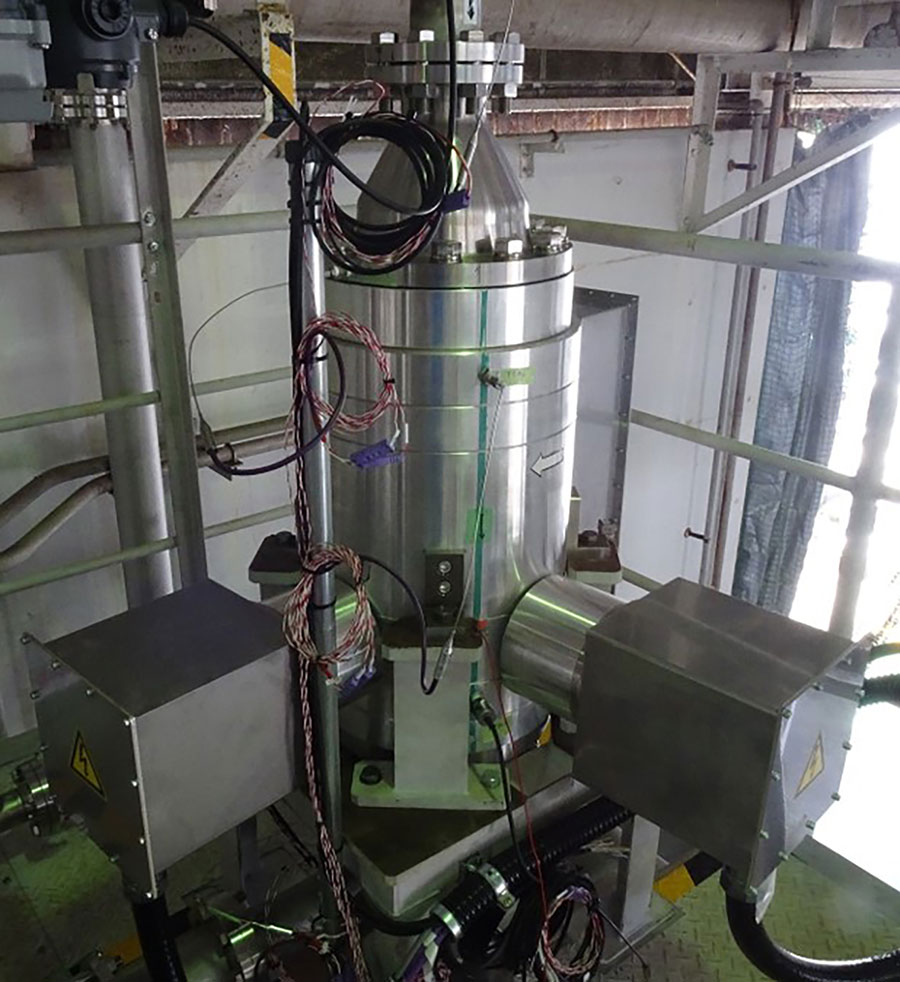 Mitsubishi Heavy Industries, Ltd. (MHI) and Mitsubishi Heavy Industries Marine Machinery and Equipment Co., Ltd. (MHI-MME), a wholly owned operating company of MHI based in Nagasaki, have successfully conducted demonstration testing of 100 kW class cryogenic ORC (Organic Rankine Cycle) power generation using the world’s first “next-generation oilless cryogenic turbine generator.” The innovative generator adapts the turbine generator featuring a hermetically sealed oilless structure, of the kind used in ORC generation, to cryogenic power generation. The testing demonstrated that with use of liquid nitrogen as the cryogenic energy source it is possible to secure a stable refrigerant cycle and the specified regeneration output without freezing-induced clogging, etc. even under conditions more severe than the low temperatures of conventional LNG (liquefied natural gas) cryogenic generation.
Mitsubishi Heavy Industries, Ltd. (MHI) and Mitsubishi Heavy Industries Marine Machinery and Equipment Co., Ltd. (MHI-MME), a wholly owned operating company of MHI based in Nagasaki, have successfully conducted demonstration testing of 100 kW class cryogenic ORC (Organic Rankine Cycle) power generation using the world’s first “next-generation oilless cryogenic turbine generator.” The innovative generator adapts the turbine generator featuring a hermetically sealed oilless structure, of the kind used in ORC generation, to cryogenic power generation. The testing demonstrated that with use of liquid nitrogen as the cryogenic energy source it is possible to secure a stable refrigerant cycle and the specified regeneration output without freezing-induced clogging, etc. even under conditions more severe than the low temperatures of conventional LNG (liquefied natural gas) cryogenic generation.
Read More
Students Design Experimental Fuel System To Power Liquid-Propellant Rocket Engines
 Aerospace Engineering students Alex Clay and Samir Ahmed have spent the past four years at Embry-Riddle Aeronautical University manufacturing complex liquid-propellant rocket engines. Now, as they near graduation, there is one last thing they’d like to do: Prepare for ignition. Along with fellow members of the university’s Experimental Rocket Propulsion Laboratory (ERPL), the two have built a state-of-the-art fuel-feed system in hopes of accomplishing that very goal. If successful, the hardware will offer future generations of rocketry students a safe and consistent way to field test their designs — which, according to sophomore Aerospace Engineering student Taylor Koehn, is currently the “most significant bottleneck” in the process of engine building.
Aerospace Engineering students Alex Clay and Samir Ahmed have spent the past four years at Embry-Riddle Aeronautical University manufacturing complex liquid-propellant rocket engines. Now, as they near graduation, there is one last thing they’d like to do: Prepare for ignition. Along with fellow members of the university’s Experimental Rocket Propulsion Laboratory (ERPL), the two have built a state-of-the-art fuel-feed system in hopes of accomplishing that very goal. If successful, the hardware will offer future generations of rocketry students a safe and consistent way to field test their designs — which, according to sophomore Aerospace Engineering student Taylor Koehn, is currently the “most significant bottleneck” in the process of engine building.
Read More
BCCK Boosts Propane Recovery with Next-Generation Technology at Cryogenic Gas Processing Facility
 BCCK, a leader in engineering, procurement, fabrication and field construction services, has applied patent-pending technology, G2R-Flex®, to provide enhanced propane recovery for a premier midstream group in Ohio’s Marcellus-Utica Basin. Utilizing a skidded BCCK patent-pending design, G2R-Flex® improved current 200 MMSCFD GSP facilities' propane recoveries to greater than 99 percent in ethane rejection and can also be applied to improve performance in ethane recovery.
BCCK, a leader in engineering, procurement, fabrication and field construction services, has applied patent-pending technology, G2R-Flex®, to provide enhanced propane recovery for a premier midstream group in Ohio’s Marcellus-Utica Basin. Utilizing a skidded BCCK patent-pending design, G2R-Flex® improved current 200 MMSCFD GSP facilities' propane recoveries to greater than 99 percent in ethane rejection and can also be applied to improve performance in ethane recovery.
Read More
 GenH2, an industry leader in hydrogen infrastructure solutions, announced that the company has signed a partnership agreement with H2 Genesis, a leading liquid hydrogen infrastructure and operations company, to deliver liquid hydrogen across North America. In their first collaboration, GenH2, as manufacturer, and H2 Genesis, as owner-operator, will deploy the GenH2 LS20 Mobile Liquid Hydrogen System, an end-to-end liquefaction and storage system, to several locations in the United States starting with Florida.
GenH2, an industry leader in hydrogen infrastructure solutions, announced that the company has signed a partnership agreement with H2 Genesis, a leading liquid hydrogen infrastructure and operations company, to deliver liquid hydrogen across North America. In their first collaboration, GenH2, as manufacturer, and H2 Genesis, as owner-operator, will deploy the GenH2 LS20 Mobile Liquid Hydrogen System, an end-to-end liquefaction and storage system, to several locations in the United States starting with Florida.
Read More
First Measurements of Hydrogen-Boron Fusion in a Magnetically Confined Fusion Plasma
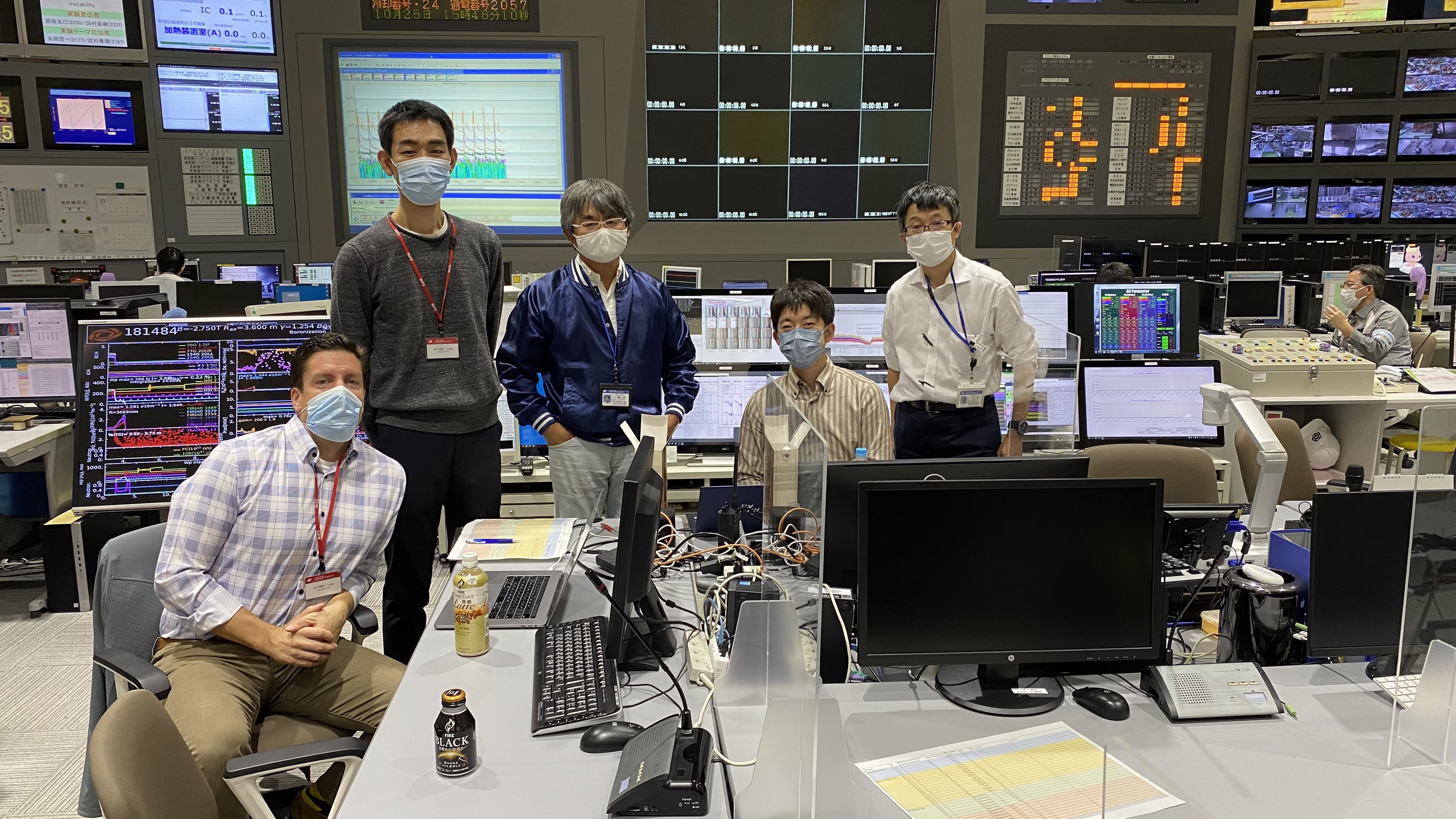 As fusion developers around the world race to commercialize fusion energy, TAE Technologies has pioneered the pursuit of the cleanest and most economical path to providing electricity with hydrogen-boron (also known as p-B11 or p11B), an abundant, environmentally sound fuel. Recently, the company announced, in collaboration with Japan’s National Institute for Fusion Science (NIFS), a noteworthy research advancement: the first-ever hydrogen-boron fusion experiments in a magnetically confined fusion plasma.
As fusion developers around the world race to commercialize fusion energy, TAE Technologies has pioneered the pursuit of the cleanest and most economical path to providing electricity with hydrogen-boron (also known as p-B11 or p11B), an abundant, environmentally sound fuel. Recently, the company announced, in collaboration with Japan’s National Institute for Fusion Science (NIFS), a noteworthy research advancement: the first-ever hydrogen-boron fusion experiments in a magnetically confined fusion plasma.
Read More
 CSA’s annual Young Professionals introduces outstanding engineers, scientists, and technicians (under 40) who are making fascinating contributions to the cryogenics and superconductivity industries. Debuted in the summer of 2006, this spotlight shines on future leaders who show the promise of making a difference in their fields.
CSA’s annual Young Professionals introduces outstanding engineers, scientists, and technicians (under 40) who are making fascinating contributions to the cryogenics and superconductivity industries. Debuted in the summer of 2006, this spotlight shines on future leaders who show the promise of making a difference in their fields.
Read More
 Making advances in science requires the proper tools. Often those tools must be developed by scientists themselves. That’s the story of most science missions studying Cosmic Microwave Background radiation (CMB). Sub-Kelvin coolers developed by Chase Research Cryogenics (CSA CSM) have played a strategic role in many of these missions. Let’s look at two exciting examples.
Making advances in science requires the proper tools. Often those tools must be developed by scientists themselves. That’s the story of most science missions studying Cosmic Microwave Background radiation (CMB). Sub-Kelvin coolers developed by Chase Research Cryogenics (CSA CSM) have played a strategic role in many of these missions. Let’s look at two exciting examples.
Read More
 GenH2, an industry leader in hydrogen infrastructure solutions, announced the launch of its groundbreaking LS20 mobile liquid hydrogen system, an end-to-end liquefaction and storage system. The innovative, mobile liquefaction unit offers a space-optimized, fully integrated liquid hydrogen solution to be used in a range of applications from transportation to energy backup, to accelerating the use of liquid hydrogen through pilot projects and testing. It will also be utilized as a lab setting for testing material, insulation, thermodynamic properties and use cases for its applications.
GenH2, an industry leader in hydrogen infrastructure solutions, announced the launch of its groundbreaking LS20 mobile liquid hydrogen system, an end-to-end liquefaction and storage system. The innovative, mobile liquefaction unit offers a space-optimized, fully integrated liquid hydrogen solution to be used in a range of applications from transportation to energy backup, to accelerating the use of liquid hydrogen through pilot projects and testing. It will also be utilized as a lab setting for testing material, insulation, thermodynamic properties and use cases for its applications.
Read More
 The Need for Vibration-Free Cryogenics The measurement of local gravitational fields requires continuous, high precision and extremely stable measurements. In 1968, the development of the superconducting gravity meter (SG)[1] vastly improved the state of the art. In contrast to mechanical quartz or metal springs, SGs use a superconducting sphere levitated in an ultra-stable magnetic field generated by persistent currents in a pair of superconducting coils. This cryogenic design enabled sensitivities that can exceed 10-10 m/sec2 (i.e., 0.01 ppb of the earth’s gravitational field) and drifts less than 60 nm/sec2/year. Many gravity measurements (hydrology, volcanology, geothermal energy and postglacial rebound) require durations that last years, and, in many cases, decades. To fulfill this need, extremely long hold time cryostats were developed to maintain the SG at operational temperatures close to 4 K. Special techniques were also developed to prevent cryocooler-induced accelerations from contaminating the geophysical signals of interest. While most superconducting quantum interference device (SQUID) measurement systems[2] do not require multiyear measurement times, they benefit from improved cryogenic systems that minimize or eliminate the expenditure of liquid helium.
The Need for Vibration-Free Cryogenics The measurement of local gravitational fields requires continuous, high precision and extremely stable measurements. In 1968, the development of the superconducting gravity meter (SG)[1] vastly improved the state of the art. In contrast to mechanical quartz or metal springs, SGs use a superconducting sphere levitated in an ultra-stable magnetic field generated by persistent currents in a pair of superconducting coils. This cryogenic design enabled sensitivities that can exceed 10-10 m/sec2 (i.e., 0.01 ppb of the earth’s gravitational field) and drifts less than 60 nm/sec2/year. Many gravity measurements (hydrology, volcanology, geothermal energy and postglacial rebound) require durations that last years, and, in many cases, decades. To fulfill this need, extremely long hold time cryostats were developed to maintain the SG at operational temperatures close to 4 K. Special techniques were also developed to prevent cryocooler-induced accelerations from contaminating the geophysical signals of interest. While most superconducting quantum interference device (SQUID) measurement systems[2] do not require multiyear measurement times, they benefit from improved cryogenic systems that minimize or eliminate the expenditure of liquid helium.
Read More
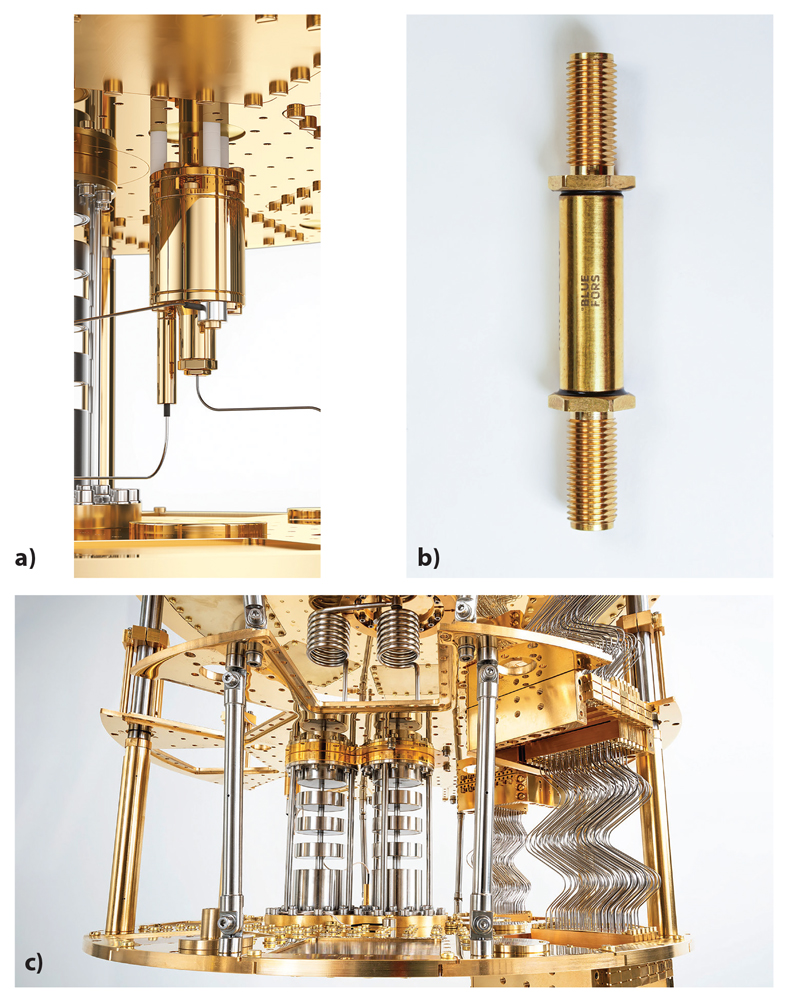 Necessity of mK-Cryogenics-During the past years, advances in both lithography and millikelvin cryogenics have supported and enabled vast improvement in the sophistication of experimental research on electrical circuits that display uniquely quantum mechanical behavior. It comes as no surprise that dilution refrigerator measurement systems have moved beyond basic physics research contraptions, and into central focus in the new era of quantum engineering. Achieving millikelvin temperatures remains a prerequisite for many of the leading hardware candidates for quantum computing with solid-state devices. For example, superconducting quantum circuits need temperatures low enough to keep microwave thermal photon populations on the chip negligible. In addition, the amplifiers that are typically required to achieve high-fidelity dispersive readouts are also based on superconductors and operate at the lowest noise temperatures allowed by physical limits.
Necessity of mK-Cryogenics-During the past years, advances in both lithography and millikelvin cryogenics have supported and enabled vast improvement in the sophistication of experimental research on electrical circuits that display uniquely quantum mechanical behavior. It comes as no surprise that dilution refrigerator measurement systems have moved beyond basic physics research contraptions, and into central focus in the new era of quantum engineering. Achieving millikelvin temperatures remains a prerequisite for many of the leading hardware candidates for quantum computing with solid-state devices. For example, superconducting quantum circuits need temperatures low enough to keep microwave thermal photon populations on the chip negligible. In addition, the amplifiers that are typically required to achieve high-fidelity dispersive readouts are also based on superconductors and operate at the lowest noise temperatures allowed by physical limits.
Read More
The Development of an AMRR for Sub-Kelvin Cooling of Space Science Instrumentation - ICC21 Best Student Paper Award Recipient
 Introduction-Cryogenic detectors have higher sensitivity and better energy resolution than alternative sensors, making them an attractive option for space exploration and essential for observing low energy photons in the near- or far-IR, X-ray and submillimeter ranges.[1] Since NASA’s first cryogenic missions in the early 1980s, increasingly complex space detectors have required continuous advancement in cryogenic technology.[2]
Introduction-Cryogenic detectors have higher sensitivity and better energy resolution than alternative sensors, making them an attractive option for space exploration and essential for observing low energy photons in the near- or far-IR, X-ray and submillimeter ranges.[1] Since NASA’s first cryogenic missions in the early 1980s, increasingly complex space detectors have required continuous advancement in cryogenic technology.[2]


